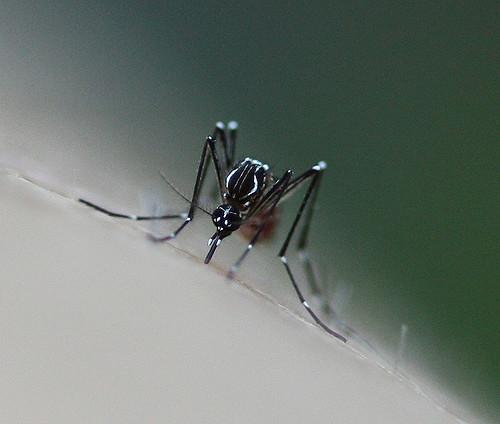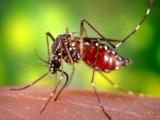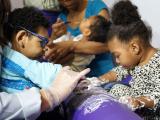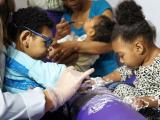Concerns about local Zika spread have centered around parts of Florida and Texas where a limited number of cases were reported following large outbreaks in Brazil and other Americas countries, but in California the numbers of infected travelers and competent mosquito vectors could also offer the virus a foothold, according to a new report published yesterday.
In another Zika development, the National Institutes of Health (NIH) today announced the launch of the first human trial of an experimental live attenuated Zika vaccine.
California report
The report on Zika's threat to California came from an analysis of travel-related cases reported between November 2015 and September 2017 and a review of the latest mapping of Aedes aegypti and Aedes albopictus mosquitoes in the state. A team from the California Department of Public Health published their findings yesterday in an early online edition of Emerging Infectious Diseases.
Over the study period, 588 travel-related cases were reported, including 139 in pregnant women, 10 congenital infections, and 8 sexually transmitted illnesses. Most had traveled to Mexico or Central America, and many traveled to California when they could have been viremic. Of the 570 case-patients with a travel history, 79 had lived in the country where they were exposed for at least 6 months before coming to California. Excluding that group, women who were pregnant when Zika was diagnosed had longer travel durations than other Zika patients.
Of the 139 pregnant women, 120 had completed their pregnancies by Sep 1, 2017, and 114 had live births and 6 experienced fetal loss. Among the live births, 90 babies were tested for Zika, of which 6 were positive. Along with those six, four other babies whose mothers were exposed to Zika but tested negative were positive for Zika virus.
A total of eight babies were born in California with Zika-linked birth defects. Two were negative for the virus, but their mothers tested positive. And three Zika-positive babies had mothers who tested negative.
Overlapping mosquito, patient locations
As of September 2017, Aedes aegypti mosquitoes had spread to 124 locations in California, and Aedes albopictus had spread to 53.
Of the case-patients, 74.6% were probably viremic while in California, and of the viremic group, 64.1% were residents of counties where Aedes mosquitoes have been detected, most commonly in southern California.
Though health officials didn't identify any local Zika transmission, they said the overlap of viremic travelers and mosquito vectors potentially increases the risk of local transmission and will continue to pose a risk that requires continued human and mosquito surveillance. They said they expect to see limited local transmission continue in some affected countries, including Mexico, continues to pose a threat to California, though a low one.
"Given the large number of travelers between Mexico and California, it is critical that Zika prevention messaging, surveillance, and outreach continue, especially as it pertains to women traveling while pregnant," the group wrote.
Zika vaccine trial launch
In another Zika development, the NIH said vaccination is under way in a trial of a live attenuated Zika vaccine developed by scientists at its National Institute of Allergy and Infectious Diseases (NIAID).
The study will enroll 28 healthy, nonpregnant adults ages 18 to 50 at the Johns Hopkins Bloomberg School of Public Health Center for Immunization Research in Baltimore and at the Vaccine Testing Center at the University of Vermont's Larner College of Medicine. NIAID is the sponsor of the trial.
Anthony Fauci, MD, NIAID director, said, in a NIH statement, "Zika virus infection remains a significant threat to pregnant women and their developing fetuses, and we can expect to see periodic outbreaks and cases in areas where Aedes aegypti mosquitoes thrive." He added that no licensed vaccines for Zika are on the market, but several are in various stages of development.
The vaccine, known as ZIKV/D4Δ30-714, consists of a genetically engineered chimeric virus that has a dengue virus type 4 backbone that expresses Zika virus on surface proteins. The chimeric virus is live but attenuated, or weakened, so that it can't cause disease, but can prompt an immune response.
See also:
Aug 15 Emerg Infect Dis report
Aug 16 NIH press release























